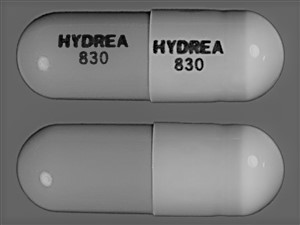There’s no doubt that hydroxyurea has revolutionised the way clinicians manage patients living with sickle cell disease. It is the primary therapy of choice among this population in high-income countries. It has also garnered momentum in resource-limited settings like India, Nigeria, and Uganda – regions that harbour the highest-burden of sickle cell disease globally. Hydroxyurea dosing remains a daunting challenge in such environments because of the costs involved regarding its monitoring, which requires both clinical and laboratory assessments. In our previous article about this wonder drug, we extensively highlighted how to properly prescribe hydroxyurea to achieve the maximum possible effects among people that take it. However, such intervention involves escalating the drug doses until clinicians attain the maximum toxic (tolerated) dosage. Given the costs involved in such an endeavour, it becomes imperative to assess the feasibility of an alternative yet potent dosing approach. The REACH and NOHARM MTD trials assessed such feasibility. They deduced that much as titrating hydroxyurea doses to the maximum tolerated dosages were superior to fixed moderate dosing, the latter was equally effective in reducing acute painful episodes and stroke prevention. That said, in today’s article, we explain the specifics of a fixed moderate dose and highlight the beneficiaries of such an intervention.
Hydroxyurea dosage. Prescribe it the right way!
For titration doses, clinicians begin at 20mg/kg/day in children and 15 to 20mg/kg/day in adults. They escalate the dose at 5mg/kg/day every six to eight weeks till they achieve a maximum tolerated dose. They evaluate the blood indices every two to three months to help them reach such doses. However, in a fixed moderate dose, clinicians give children hydroxyurea at 20mg/kg/day and adults – 15mg/kg/day. They can fix it daily or as a daily equivalent but intermittently per week. Say, if a child from the Agago district weighs 10kg, at 20mg/kg/day, his daily dose will be 200mg. However, hydroxyurea comes in only 500mg capsules: it will be impossible to estimate the dose. So, what clinicians will do is multiply 200mg by seven days, arising to a total of 1400mg, an equivalent of three hydroxyurea capsules every week. They will then instruct the parents to give the child one capsule on Monday, Wednesday, and Friday. By doing so, a daily 20mg/kg/day dosing becomes feasible.
Fixed moderate hydroxyurea dosing is optimal in areas with limited resources – say, in the remote villages in sub-Saharan Africa. It is cost-effective and doesn’t require intensive monitoring. Any person living with sickle cell disease that suffers three or more severe acute painful episodes per year, acute chest syndrome that requires blood transfusion, or gets a stroke is an absolute candidate for hydroxyurea therapy. If the parents/guardians can afford and maintain the appropriate clinical and laboratory evaluations, dose escalation with a maximum tolerated dose becomes the best choice. However, if they cannot afford routine monitoring schedules due to costs, transport, and other unforeseeable circumstances, a fixed moderate dose is the only feasible choice. And this is true for many low- and middle-income countries.
All in all, the costs and hospital capability affect the dosing of hydroxyurea. The willingness of the parents/guardians may ease or complicate the whole process. As a clinician, it remains our duty to individually assess the nature and characteristics of patients that will benefit from either treatment and not generalise – a one-size-fits-all mentality.
We’ve used a section on sickle cell disease in sub-Saharan Africa from UpToDate to write today’s article.




